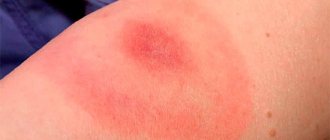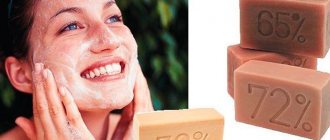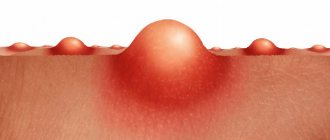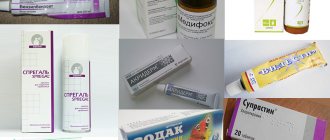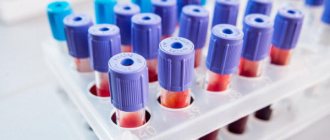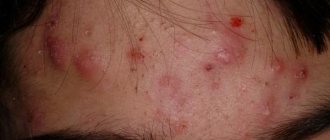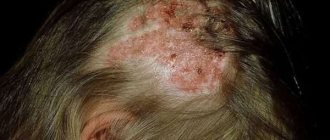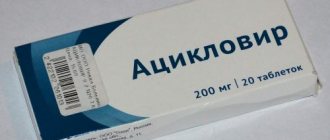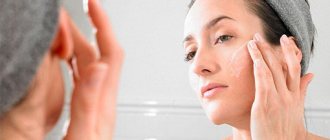Bee, bumblebee, wasp or hornet sting
These insects sting solely for the purpose of self-defense.
Together with the sting, toxins penetrate into the human body.
In this case, the bite site becomes painful and red, the skin swells, and a burning sensation occurs. If you are intolerant to the toxin, you may experience fever, nausea, and headache; in severe cases, muscle aches, difficulty breathing, fainting, and anaphylactic shock. If you are bitten by a wasp, bumblebee, hornet or bee, first of all, you need to remove the sting from the wound and try to squeeze out the poison that has entered it. Those who have had cases of allergic reactions need to take anti-allergy medicine and make a compress of ammonia or ethyl alcohol diluted with water. Warm tea is also beneficial. If the bite site is very painful, you can also take an anti-inflammatory drug. It is imperative to monitor the condition of the victim (whether there is nausea or dizziness, fever or skin rash, or a drop in blood pressure).
Help for insect bites
External agents and tablets
What will help with insect bites:
- Analgesics. Used for severe pain and allergies. You can take pills or give an intramuscular injection - Analgin, Baralgin.
- Hormonal medications - Prednisolone in tablet form, injections, drops.
- Calcium based preparations. For example: Calcium chloride, calcium thiosulfate. Used to reduce the sensitivity of the immune system. To enhance the effect, use together with antihistamines.
- Anti-inflammatory medications. Inflammation can be relieved with NSAIDs in the form of creams, ointments, and gels.
- Antihistamines. When allergies occur, they help relieve itching and reduce swelling. At the first sign of an adverse reaction, take the pills immediately. Types of antiallergic medications:
- local - ointments, gels applied to the inflamed area;
- systemic - tablets, it is better to give preference to the second generation, since they do not have a sedative effect.
Local treatment with antihistamines
The therapy is aimed at the skin and mucous membranes affected by pest attacks. Antihistamines prevent swelling and relieve itching and red marks.
The most effective are:
- Suprastin;
- Tavegil;
- Fenistil;
- Claritin;
- Ointments.
The ointment will help alleviate the patient's condition. But it will not completely relieve the symptoms. They have different properties: anti-inflammatory, antimicrobial, analgesic, disinfectant.
List of effective medications:
- Akriderm;
- Advantan;
- Menovazin;
- Levomekol;
- Fenistil;
- Streptoderm.
- Various balms.
Folk remedies
Traditional medicine methods that will help relieve pain, inflammation, swelling:
- Apply a cold object. Then treat with alcohol or antiseptic. After disinfection, apply cream.
- A lotion based on a solution of baking soda will remove the tooth.
- Apply a slightly crumpled leaf of plantain, mint, parsley, or dandelion to the wound. Fix and leave for a while.
- Prepare a decoction of Veronica officinalis in a ratio of 1 tbsp. l. herbs for 1 cup of boiling water. Apply a compress to the inflamed area.
- Pour half a tablespoon of chopped parsley root into 500 grams of water. Boil for 3 minutes. Drink 2 tbsp decoction. l. 3 times a day.
- Dissolve one teaspoon of baking soda in 5 tbsp. l. water. Treat the bite site with the resulting solution.
- Brush the spot with a star.
- Prepare the mixture: mix 1 part alcohol or vodka with 1 part calendula.
How to relieve bite symptoms?
If slight swelling and slight redness are noticeable, then you can get by with applying a piece of ice. In other situations, it is unlikely that you will be able to avoid the use of special ointments and creams.
Before choosing a specific medicine, you need to understand what differences exist and which form is preferable in a particular case.
Almost all antihistamines or anti-inflammatory ointments are made based on the same active ingredient. A distinctive feature may lie in the speed at which the drug is absorbed into the skin. If you choose between ointment, cream and gel, then it is recommended to give preference to the third option; it is absorbed in just a couple of minutes.
If there is a moderate degree of skin damage, swelling and severe itching, then it is worth using antihistamines sold in pharmacies. This ointment is applied directly to the wound. Preparations containing menthol should be spread on the area around it. Such remedies are not medicinal, they only relieve disturbing symptoms.
Do alcohol solutions help?
You can relieve itching after an insect bite with an alcohol solution, which is also a good antiseptic. The product is effective if used immediately.
It is not the wound itself that needs to be treated, but the areas of skin around it. This way you can neutralize the poison and remove the itching sensation.
You can use regular pharmaceutical alcohol or strong alcohol. It is advisable that such solutions are used cold.
Products containing zinc
Very often, small children suffer from insect bites, and the reactions can be more serious than in an adult. In such situations, choosing medications can be difficult.
If the symptoms are pronounced, then you can use zinc-based ointment. It can be applied to the bite several times a day. Care must be taken to ensure that the ointment does not get into the child’s eyes or mouth.
What insect bites can be dangerous?
The following attacks pose a huge threat:
- Scorpios.
- Poisonous spiders that can cause death.
- Bees, wasps in a group attack of more than 3 pieces.
- Mosquitoes and bees can cause allergies and infect with malaria. Bites can also cause fever.
- Moshek. Their saliva is poisonous and can cause allergies. Itching and swelling may not go away for several weeks.
- Ticks. Their bites can cause a nervous system disorder – encephalopathy. May lead to disability.
- Hornet. It can inject poison that will burn the skin. As a result, pulmonary edema, suffocation, and shortness of breath may occur.
- Lice. They can cause typhus and rickettsiosis.
How to determine who bit?
As a rule, the bites of various insects differ in a number of features. They can have different appearances, different symptoms after the bite and different consequences. In order to determine which insect bit, it is necessary to become more familiar with the bites of each of them.
Bedbugs
Most often, bed bugs bite people. Such bugs usually bite at night when people are sleeping. Initially, after a bug bite, almost no traces are visible on the body. Only small red spots on a pinkish background may appear. A day later, swelling and redness appear at the site of the bite.
Also, in most cases, bed bug bites can be accompanied by itching. These symptoms are a severe allergic reaction to the bites of many insects. Previously, it was believed that bed bug bites were very harmless, however, as a result of recent research, it has become known that these bugs can carry Chagas disease.
Photo:
Spiders
Most spider species are non-venomous. Their bites are only accompanied by the appearance of a red spot. However, there are also spiders whose bites cause a severe allergic reaction. This can also cause skin necrosis and even poisoning.
Only a black widow can pose a threat to humans. The first reactions after a black widow bite appear within half an hour. Initially, swelling and pain appear. After a few hours, the bite causes aches throughout the body, as well as nausea and vomiting. If you are bitten by a black widow, you should immediately seek help from a medical facility.
Photo:
Ticks
Ticks take first place among insects in terms of adverse effects on the human body. As a rule, a person becomes a victim of a tick while walking in nature.
Ticks move well throughout the human body, so most often they infect the most delicate areas of the body:
- Groin area.
- Stomach.
- Armpits.
- Neck.
- The area behind the ears.
A person does not feel when a tick bites him.
The main symptoms of a tick bite:
- Weakness.
- Headache.
- Tachycardia.
In addition, ticks are also among the leaders in transmitting various diseases.
Such diseases include:
- Tick-borne encephalitis.
- Lyme disease (tick-borne borreliosis).
- Crimean-Congo hemorrhagic fever.
There are also mites that live under human skin - Demodex. It initiates the disease demodicosis. Here you can see a photo of a subcutaneous mite on the face.
Photo:
Fleas
When a flea bites, small red dots first appear on the body, which are accompanied by itching.
Mainly fleas bite the following areas of the body:
- Ankles.
- Caviar.
- Knees.
- Stomach.
- Armpits.
An allergic reaction to a flea bite is accompanied by redness, swelling and itching. If you scratch the redness, an infection may occur, which will lead to suppuration of the bites. For a long time, fleas carried the plague. Nowadays, endemic outbreaks can also be found, but only in rare cases.
Photo:
Bees
Bee stings are characterized by severe pain that appears instantly. This pain may not go away for several hours. The area stung by a bee becomes pale in the very center, and redness appears around. As a rule, bee stings cause severe swelling. If there are several bites, a person may experience a severe allergic reaction.
Allergies are accompanied by the following symptoms:
- Dizziness.
- Weakness.
- Cramps.
- Quincke's edema.
- Cardiac arrest (with a large number of bites).
Photo:
Linen lice
Linen (body) lice bites are very similar to bed bug bites. They are very small and painless, but are accompanied by severe itching. Body lice are parasites that can cause the development of head lice. At present, science has not yet determined whether these insects are carriers of any infectious diseases.
Photo:
Ants
The ant bite itself is very painful, so it is simply impossible not to notice it. Externally, the bite appears as a red dot. It is also worth noting that there are also poisonous species of ants. If a person is bitten by a fire ant, the bite is accompanied by a strong burning sensation and the formation of pustules, which can leave scars.
Photo:
Scorpios
A scorpion sting will also not go unnoticed. It is immediately accompanied by sharp pain and burning. Symptoms of a scorpion sting may vary depending on the type of insect itself.
Mainly:
- Burning and pain.
- Puffiness and swelling.
- Redness.
- Numbness.
- Cramps.
- Nausea.
- Tachycardia.
Photo:
Preventive measures
Following preventive measures can help reduce the risk of the problem occurring. Repellents are used for prevention
. These are chemicals that are designed to repel arthropods. Long-term protection can be provided by:
- OFF Extreme;
- OFF SMOOTH&DRY;
- UltraThon;
- DEET Vocco;
- Mosquitoll Super active protection.
They are made in the form of sprays, oils, aerosols, creams. Regular use will discourage the desire to bite in many representatives of the entomofauna.
Preventive measures also include:
- avoiding outdoor recreation in the evening, when arthropods are most active;
- choosing clothes with long legs and sleeves;
- avoiding choosing multi-colored and bright clothes for relaxation;
- installation of mosquito nets on doors and windows;
- performing vaccinations when traveling abroad;
- inspection for the presence of livestock.
Such preventive measures are suitable for adults and children, and also reduce the risk of problems.
In conclusion, it must be said that you need to be very careful about your health. If a person has a severe allergic reaction, then during a bite it is necessary to immediately seek help from a specialist and follow his recommendations.
Insect bites are quite common because of all the living things that inhabit the planet, these organisms are the most numerous. Almost all people suffered from insect bites, some more severely, some less. The direct reaction of the human body does not depend on the fact that the skin has been pierced, but on the substances that the creature injects under the skin.
Insect bites are quite common because of all the living things that inhabit the planet, these organisms are the most numerous
There are different types of bites:
- defensive - when the insect does this to escape, for example, when it sees that someone poses a threat;
- food insects are blood-sucking insects that attack people to get food.
The consequences of insect bites depend on who bit and what the characteristics of the person are. So, for some, even a simple mosquito bite can be fatal.
Hymenoptera are dangerous for people living in mid-latitudes:
- bees;
- hornets;
- bumblebees;
- red ants.
The methods of biting vary among different insects. Bees and wasps can sting. The sting and stinging apparatus dig into the person, and the insect itself dies. And the ant bites with its jaws, and at the same time sprays poison. It is capable of biting repeatedly throughout its life.
4 times more people die from wasp and bee stings than from snake bites.
These insects are capable of biting only in self-defense. When a sting occurs, poison enters the body. This substance consists of active proteins and other components that can cause a dangerous allergic reaction.
Bites from blood-sucking insects cause a person to feel terrible sensations. Blood-sucking animals include ticks, bedbugs, fleas and mosquitoes. And some of them carry infectious diseases that are dangerous to humans:
- the malaria mosquito causes malaria;
- simple mosquitoes can provoke viral diseases, such as dengue fever, yellow fever, and equine encephalitis;
- African provokes West Nile encephalitis;
- lice are insects that cause relapsing fever and rickettsiosis;
- fleas can carry bubonic plague;
- You can become infected with Lyme disease from a tick bite;
- mosquitoes can transmit leishmaniasis;
- the bite of a tsetse fly provokes sleeping sickness;
- deer flies can transmit tularemia;
- simple flies can carry dysentery, typhus;
- Sometimes insect and spider bites lead to terrible complications and death.
Bees and wasps can sting
So, if in the middle zone there are mainly bees, then in the southern regions people can be bothered by hornets. The principle of self-defense lies behind stinging insect bites. Wasps and hornets can sting many times. And in bumblebees and bees, after a bite, not only a stinger emerges from the body, but also a stinging apparatus. The poison comes out of it over the next three to five minutes. This is why it is important to remove the stinger from the bite site as quickly as possible.
Which specialists treat allergies to insect bites?
Allergists and immunologists are doctors who specialize in diagnosing allergies and prescribing injection therapy for allergies to insect stings.
The allergic reaction itself can be treated by emergency or primary care physicians, including pediatricians, internists, and family physicians.
What tests do doctors use to diagnose insect sting allergies?
If you are not sure whether your child has an allergy to insect stings, you can contact an allergist/immunologist for testing.
Today, to determine whether a person is allergic to the bite of a certain type of insect, 2 types of tests are used: blood tests and skin tests.
Skin testing involves placing a sample of insect venom on or under the upper level of the skin and observing the area for signs of an allergic reaction.
The blood test includes a test called a radioallergosorbent test (RAST), which measures the amount of IgE antibodies in the blood to a specific substance.
How to treat a severe allergic reaction?
To date, there are no home remedies that can prevent or permanently eliminate an allergic reaction. The most common and effective first aid medicine is adrenaline (injection solution), which must be injected into the subcutaneous tissue or muscle of the front of the thigh. It is sold in pharmacies with a prescription.
Algorithm of action in case of an allergic reaction:
- Be sure to call an ambulance.
- If you have adrenaline available and you know how and where to inject it correctly, then immediately inject this drug (be sure to write down the time when the injection was given to inform your doctor).
- If such cases have already occurred and you have an antihistamine previously prescribed by the doctor, then give it to the child in the recommended dose.
Make sure that the child lies on his back until the doctors arrive. However, if he is vomiting or has trouble breathing, he should lie on his side.
Features of the reaction in children
First of all, you should pay attention to the child’s emotional background: if there are no significant changes in the baby’s activity and mood, obviously, the consequences have not gone beyond the normal limit. In such a situation, it is enough to disinfect the damaged area of skin.
When a child develops lethargy and tearfulness, accompanied by fever, swelling and gastrointestinal reactions, the only correct solution is to call an ambulance.
List of situations in which medical intervention cannot be avoided:
- with local swelling of the larynx, tongue and eyes; the first two situations are fraught with suffocation, and if the eye is damaged, irreversible consequences are possible;
- in case of secondary infection, when the damaged area becomes inflamed after some time;
- with a critical indicator of intoxication: vomiting, loss of consciousness;
- when an abscess (purulent lump) appears, which occurs due to tissue damage;
- when a rash (pimples), blisters, or swelling occurs that has spread over a wide area.
In the event of a bite, you need to provide first aid as quickly as possible, and then keep the situation under close attention. If you cannot cope with the situation on your own, the right thing to do is to turn to specialists.
Useful tips
If bites appear on the body, you should use a number of rules. For example:
- First of all, you need to determine what kind of insect bit you, since some bites indicate the presence of parasites in the house, with which you need to immediately begin fighting.
- The bite site should be immediately treated with a disinfectant and, if necessary, the sting should be removed.
- A cold source, possibly ice, is applied to the bite site.
- The bite site is treated with ointment, cream or gel to relieve severe itching.
- Take an antihistamine if you are prone to allergies.
- In difficult situations, you should not hesitate, but call an ambulance immediately.
If you discover fleas, bedbugs or wasp nests in your home, you must immediately take measures to destroy them. This can be done independently, as well as with the help of special services. After this, you need to think about how to protect your home from repeated insect infestations. Plants with a bright aroma that can repel insects are suitable for this. Adhesive tapes, fumigators, various traps, mosquito nets, repellents, etc. are also used.
This is interesting: Rosacea on the face - treatment, causes, ointments, folk remedies, reviews (photos)
Reviews
Varvara, 34 years old, Tula
Periodically, someone bit me at home, I didn’t pay attention until the number of red spots increased to a dozen. I started looking for the reason, and found bedbugs under the mattress, I was shocked, because... I have never encountered such insects. I removed them with an aerosol, but I had to keep the mattress outside for a long time.
Olga, 28 years old, St. Petersburg
I am allergic to any insects. The bite sites are swollen so much that it is difficult to understand who attacked. I identified the bedbugs by the shape of the spots - they formed paths of 3-4 pieces. An antihistamine helped remove the itching, but the marks did not disappear soon, because at first we poisoned the parasites with Karbofos, and they still bit from time to time.
Angelina, 29 years old, Kerch
I couldn’t tolerate parasites at home, but I had to encounter them with my relatives when we went to Alushta. In the morning I saw trails of red spots on my stomach, and I immediately felt bad from the realization that insects were crawling on me. We left that same day, I checked all our things so that we wouldn’t accidentally bring parasites with us.
Compared to other insects, bedbugs bite between 2 and 5 a.m.
What to do if bitten by an insect
Fly
How to distinguish:
Fly bites cause unpleasant inflammatory processes - red, painful, very itchy spots. Unlike mosquito and flea bites, a fly bite is very painful. They are generally not dangerous, but in many cases they can cause allergies or insect-borne diseases. That is why, if you are bitten by a fly, you should consult a doctor. If you're traveling to hot or least developed countries, make sure you're protected. If possible, wear long sleeves, pants, and use bug spray.
First aid:
The consequences depend on the type of fly; if you cannot identify it, consult a doctor and describe the symptoms. If you cannot see a doctor right away, use hydrocortisone or calamine to apply to the bites. Oatmeal baths and aloe vera can help you relieve itching and pain.
In addition, ice can be used to relieve symptoms and the affected areas of the skin should be washed with clean water and soap. Under no circumstances should you scratch or scratch the bite site. If symptoms persist for a long time and you do not feel relief, consult a specialist.
Lice
How to distinguish:
Lice that parasitize the human body come in different types: head, body, and pubic. You can easily identify a louse bite - when you see itchy red spots on the body, mainly near the hair, check the head or pubis. If you notice small white grains that look like dandruff, bursting when pressed, or directly see the insect itself - small, brown, the size of a sesame seed, then you can be sure that it was lice that bit you.
First aid:
Lice themselves do not transmit disease, but they are unpleasant and worth getting rid of. Lice living on the body mainly reproduce in unsanitary conditions. In order to get rid of pubic or head lice, nowadays there are a huge variety of shampoos and preparations. However, you won't be able to completely get rid of them just by using shampoo. Adults will die from it, and the eggs will have to be combed out long and hard.
Repellent methods
In order not to deal with the consequences of bites, if possible, you need to protect yourself from them. There are both numerous industrial and folk remedies for repelling insects:
- pharmacies offer repellents in the form of ointments, emulsions, sprays, ignition coils, and fumigators; Also on sale are bracelets impregnated with the active substance, convenient for children;
- essential oils of mint, citronella, lavender, juniper actively repel blood suckers; the oil can be distributed in the air using an aroma lamp; also, when mixed with any vegetable oil in a proportion of three drops per teaspoon, you can obtain an emulsion for application to open areas of the body;
- most insects cannot tolerate the aroma of vanilla; For repelling, both natural essential oil and extract, and any synthetic substance with this smell will do;
- Among the effective folk methods of scaring away are washing with a decoction of wormwood or chamomile, smoking near the resting place of incense sticks;
- There are also devices that scare away using ultrasound; their range of action is about three meters.
You need to take especially active care of preventive measures when going outdoors in the warm season. By relaxing and losing control of the situation, you can easily find yourself a victim of an insect attack. You need to have with you both means of protection against blood suckers, and the simplest preparations for quick disinfection.
Spiders
You can suffer from arthropods due to your own carelessness or carelessness. They bite only when there is a threat to their own life.
Humans have no nutritional value for them. Very rarely they attack those living in the corners of rooms, behind furniture, household appliances; wildlife inhabitants - false black widow, etc. - can bite.
The spider bites with two points. On the front of the head there are chelicerae with poisonous glands. The arthropod bites through the skin and injects poison. Pain appears instantly and local allergies develop.
Symptoms:
- bite two points;
- redness;
- edema;
- inflammation;
- a few days later an abscess appears after the bite, suppuration, itching.
Unpleasant sensations are present for 2-3 days, but the epidermis takes a long time to recover – up to 2 weeks. With an increased tendency to allergies, a deterioration in well-being is observed - weakness, dizziness, headache, abdominal discomfort.
Prevention and protection
You can protect your skin using special sprays and creams. In addition, it is necessary to take into account the daily activity and location of insects
. Clothing during walks should be light but thick to cover the skin. Tights or leggings fit well to the body and help protect against mosquitoes and ticks.
People with high cholesterol levels should avoid walking in areas where there may be mosquitoes; they can smell a pleasant smell a mile away and react quickly.
At home, you can protect yourself from insects using mosquito nets on windows and doors. And also using a fumigator. If you run out of liquid, you need to buy eucalyptus extract and spray it.
Using repellents
makes it possible to reduce the risk of bites several times and protects the body well from insects. The product can be applied both to the skin itself and to clothing materials. The effect lasts for several washes, and the smell is practically unnoticeable to humans. Mint, eucalyptus, lavender, cloves and verbena also repel mosquitoes; these oils can be used in aroma lamps.
In the practice of a family doctor, insect bites are almost the most common complaint in the summer. Fortunately, most bites are unpleasant but harmless. However, there are also bites from poisonous insects. A bite from an unknown insect can result in shock, illness and even death. So, what do insect bites look like on human skin?
- Mosquito bites, how harmless are they? Not harmless at all! The mosquito can transmit malaria, West Nile fever, Dengue fever and even yellow fever. The site of a mosquito bite is manifested by itching, redness, and swelling (photo 2) West Nile fever, a disease transmitted by mosquitoes. You can get infected with it in the city, especially if you visit basements. Cases of mosquito-related diseases occur in Russia every year. Symptoms appear within 2-14 days.
- How does a bed bug bite? When a bug bites, it leaves many painless dots on a person’s skin on a pink background (photo 3). A reaction to the bite may appear after 24 hours - intense itching and inflammation. Sometimes you have to seek medical help. Although it is believed that bed bugs are harmless insects and do not carry any diseases, experiments have proven that Chagas disease can be transmitted by the common bed bug. See 10
Type
How do bedbugs bite?
Insects are nocturnal hunters living in groups, attacking their prey during the period of deepest sleep - from 2 to 6 am. Each individual has the ability to recognize the current and pulsation of the victim’s blood, and in search of food tries to get to the most accessible capillary. The food that a bedbug needs to satiate is twice its own weight; Neither bright light nor noise can scare off an insect that senses blood.
At one time, the parasite sucks up to 1 ml of blood, then moves along the vessel and begins to feed again, making a new puncture 1.5 -2 centimeters higher. During the night, the bloodsucker can make up to 5-6 punctures; the entire feeding period takes up to half an hour in one night. Since insects feed in groups, after the “hunt” large red merging spots remain.
The bedbug larva is externally a miniature copy of an adult insect, but has a translucent body through which the blood-filled stomach is visible. A few minutes are enough to saturate the larvae. The bloodsucker does not go hunting every day. Full feeding allows him not to experience hunger for up to 1.5 weeks.
Bedbug bites are not dangerous to humans - these insects practically do not carry infectious agents, but they cause extremely unpleasant marks on the skin, reminiscent of a painful rash, painful itching, the appearance of a specific body odor, constant irritation and the manifestation of allergy symptoms.
On the skin of the affected person, a characteristic chain of marks remains along the superficial vessels, formed from red swellings with drops of blood at the tops. The distance between them is up to a centimeter. A feeding pest can leave such traces during one night feeding.
Our readers recommend!
To get rid of cockroaches, our readers recommend the Pest-Reject repeller. The operation of the device is based on the technology of electromagnetic pulses and ultrasonic waves! Absolutely safe, environmentally friendly product for humans and pets.
A characteristic feature is the multiplicity of traces (up to 50 or more). No parasitic insect can leave them in such numbers. To provide timely assistance to a bitten person, you need to be able to distinguish bedbug bites from lesions caused by other bloodsuckers.
Linen lice
A louse in the house can appear completely unexpectedly. If previously it was believed that they lived in conditions of absolute unsanitary conditions, now the opinion has changed. For lice, the mess in the room does not play a special role, the main thing is the availability of food. A photo of bed lice is presented below.
Insects bite in places where blood vessels are located closer to the skin. Traces can be found on the arms, legs, back, neck, shoulders, and occasionally on the stomach. A linen louse does not crawl onto your head; there is no point in looking for them there. This is how it differs from the head louse. Although the rest of the behavior, lifestyle, and reproduction are identical.
It is unreasonable to expect that the louse will disappear on its own. Starving her in your absence will not work. A louse can live without blood for about a month. Then it goes into a new stage - suspended animation, waiting for favorable living conditions. Thus, the fight against linen louse should be carried out immediately after its detection. If the infection of an apartment is at a small stage, it can be dealt with quickly. Tidy up the bed. Remove bedding, wash at temperatures above 65 degrees Celsius, or even better, boil.
The most terrible blood-sucking insect of all listed. Getting rid of these insects is quite difficult, especially if time is lost and the bugs have managed to multiply. You can see what a bed bug looks like in the photo. Interestingly, a hungry and a well-fed bug differs in both body size and shape. The insect has an elastic translucent chitinous cover. When blood enters the bug's stomach, it enlarges and changes color. A well-fed bedbug has a round, convex body shape and scarlet color. A hungry insect is gray or brown in color, flat, several times smaller. A photo of a hungry and well-fed bug is presented below.
Below is a photo of a child bitten by bedbugs.
Currently, there are a lot of products available to combat bed bugs. The choice depends on the degree of infestation of the apartment by insects, personal preferences, and financial capabilities. You can buy inexpensive chalk “Mashenka” for bedbugs, an expensive modern microencapsulated product used by professionals in the fight against insects. For example, Gett, Delta Zone. They destroy bedbugs with an aerosol, a concentrated solution, and general cleaning
It is very important to find a nest of bedbugs and find out the reason for their appearance.
The skin is highly sensitive, so it immediately reacts to irritating factors. No matter where a person lives, he still encounters a neighborhood of bugs, insects and mosquitoes. In fact, it is not dangerous if you use protective equipment and sprays. But one bite can be harmful and lead to severe swelling and redness, blood poisoning and anaphylactic shock.
The reaction in the form of a change in color is caused not by a puncture of the skin, but by those substances that are injected through the proboscis into the upper layer. In bites, two purposes can be distinguished: attack for the sake of protection and extraction of food in the form of blood.
An insect can attack in the wild
when people go on vacation to the forest or to the river. But home bugs and fleas can almost always bite, it does not depend on the season or time. In order to choose a method, you need to determine the type of insect based on the bite parameters. They are often confused with burn marks from nettle or hogweed.
The bite leaves a red spot or mark, which must first be treated with an antiseptic and consult a doctor.
Treatment for insect bites
Hymenoptera. If you are bitten by a bee or hornet on your hand, remove the rings. Carefully remove the sting from the wound, try to squeeze out the liquid from the wound. After this, disinfect the wound with an antiseptic. Apply ice to relieve swelling. To relieve itching, use special products - star (balm) or fenistil gel. If you have a moderate allergy, you need to take an antihistamine tablet; if you have an acute allergy, call an ambulance.
While waiting for arrival, use an anti-anaphylactic package:
- antihistamines;
- adrenaline injector;
- tourniquet to block the spread of poison.
Bloodsucking. Mosquitoes and flies are not that dangerous. Only with numerous bites are allergic reactions possible. In this regard, it is recommended:
- carry out treatment with hydrogen peroxide;
- do not scratch the bite site. The remedies mentioned above will help relieve itching.
If there are signs of allergy, you should take antihistamines; atypical symptoms: severe swelling, pain, temperature, suppuration, go to the clinic.
Parasitic. Allergies to lice and bedbug bites are rare. Nevertheless, it is necessary to fight them. And you need to treat according to the scheme for mosquito bites.
First aid for bites
When attacked by insects, it is important to competently provide first aid. Recommended:
- Rinse the affected part of the body with clean water.
- Treat this area of skin with a disinfectant. Laundry soap is suitable, it foams generously and is applied to the desired place, and after 1 minute it is washed off.
- Pull out the stinger if attacked by a bee.
Before removing the sting, you should wash your hands.
- Apply ice, most importantly, previously wrapped in sterile gauze. It will help relieve swelling and reduce burning.
- Wipe the affected epidermis with alcohol.
If there is no alcohol, then you can take vodka or calendula tincture.
- If you feel unbearable itching, you can rub the skin with table salt or soda, but in an amount of no more than 3–4 grams.
- Take an antihistamine.
- Drink warm tea.
- Lie down.
If a scorpion attacks, you must first suck out the poison from the wound. This can be done by people who do not have wounds in their mouths, otherwise they will be in mortal danger.
Note! When you notice a deterioration in your health or there is a suspicion that the insect was poisonous, it is better not to take any action, but to urgently call the hospital. The medical worker on duty will tell you over the phone what to do while the ambulance is traveling.
Most insects bite a person, do it suddenly and quite painfully. The reaction to such attacks varies from person to person, but in most cases there is a burning sensation and itching.
It is important to understand what type of pest attacked, and most importantly, what needs to be done to provide first aid
Blitz tips:
- after going to the forest, examine the skin for traces of insects;
- try not to scratch damaged areas;
- describe to the doctor in detail the appearance of the insect that bit;
- if you feel severe pain, take painkillers;
- take all measures to protect against insects: put nets on the windows, use special sprays before going into the forest, etc.;
- Install insect repellent devices in your home.
Consequences of a bite
The consequences of a bite may not appear at all, but can have a significant negative impact on the body of adults and children. In nature, there are more than one hundred thousand species of insects, as well as other living creatures that are often classified as such (arachnids, arthropods, etc.), which are capable of causing severe toxic and allergic reactions or transmitting pathogens of dangerous diseases.
The consequences of bites from domestic and wild animals also vary from discomfort to death, depending on the degree of injury, the effect on the body and the possible entry of an infectious agent into the wound.
Snake bites of various species present in Russia can cause both local trauma and inflammation in tissues, and severe toxic shock leading to human death.
The consequences of a bite are possible both immediately after the wound is inflicted and in the long term. Some diseases do not appear immediately; the incubation period can be up to several weeks.
To avoid the consequences of a bite, it is necessary to carefully monitor all possible damage to the skin surfaces, clean wounds when they occur, and seek medical help. Preventative measures are the best way to avoid both bites and their possible complications.
Skin reaction
The consequences of an attack may vary. Most often these are red spots or dots (appear from a fly or mosquito bite), severe pain or itching, and swelling. This place does not need to be scratched, because the infection spreads faster throughout the body; you also cannot squeeze out what is inside on your own and tear the top layer of skin.
Depending on the type of insect, the poison may vary
. The allergic effect manifests itself moderately or acutely. Signs of a mild form are:
- Slight redness in the area of the bite.
- The appearance of swelling and itching.
- Rash in the affected area.
- Increase in temperature at the point of injury.
The acute form is accompanied by the following symptoms:
If you have an allergic reaction, you should definitely consult a doctor, because treatment at home will not be effective. Sometimes after 10–15 minutes a person may experience anaphylactic shock.
Hymenoptera bites
They will practically not bite a person without provocation on his part. Most often this is self-defense. An attack by one insect will cause redness and possible swelling along with pain. But from a group of insects
An allergic reaction may develop and medical intervention will be needed to remove the poison from the body and neutralize the bite site.
Symptoms can vary, ranging from mild tingling and increased temperature at the site of the bite to nausea, asthmatic shortness of breath, redness and the appearance of scarlet spots throughout the body. Loss of coordination and signs of fever can also be attributed to this type of bite.
If a bee stings your arm or hand, you need to pull out the insect's sting and try to gently squeeze out the liquid from the wound. Be sure to wipe the affected area with brilliant green or iodine to kill bacteria. You can take an antihistamine tablet or use anti-inflammatory medications if you are not allergic to bees.
In addition to pharmacy treatment options, you can also use traditional methods
.
If there are multiple lesions, you cannot self-medicate; you must consult a doctor.
Mosquito bites
Everyone has encountered this problem; it is relevant in summer and autumn. Insects attack to drink blood, leaving redness, swelling and itching at the site of the bite. In the worst case scenario, they can be carriers of serious infections and fevers. There are thousands of different species of mosquitoes in the world.
One bite in a person with a weakened immune system can cause an allergic reaction and breathing complications. Pharmacies sell sprays and medications that repel insects by smell. You can purchase products that can relieve the symptoms of a bite without irritating the skin. Traditional methods used for bites:
Bites from domestic insects and spiders
Science knows more than 50 thousand bedbugs
. Although the insect does not attack frequently, an attack once a week is sufficient for feeding. But insects live in huge colonies and reproduce, so every day they are capable of harming the human body and leaving bite marks on it.
Bed bugs attack at night, resulting in scabies, severe redness in the form of dots all over the body, and small swellings. In most cases, a bug bite is mistaken for an allergic reaction and they try to get rid of the problem with pills. But first you need to remove the insects that hide under baseboards, wallpaper and in mattresses. To do this, call a disinfection service or independently treat all surfaces with a special solution. Then you should definitely ventilate the room.
For spider bites
It is best to call an ambulance. But before this, you need to thoroughly treat the site of the attack and slow down the spread of the poison under the skin. Symptoms depend on the type and concentration of the poison. The karakurt, hermit spider and black widow are considered dangerous. Although in our latitudes there are also other types of insects that can cause harm with poison.
After a bite, you need to immediately wash your body with water and soap so that infection from the wound does not harm the body even more. Do not rub the bite area. After this, to slow down the spread of the poison, you need to fix the limb with a splint. Above the bite site, you can pinch the skin or squeeze it with jute, but not too much, so as not to cause blueness.
Apply cold lotions of clean water to the bitten area. You also need to drink liquid to remove the poison from the kidneys; paracetamol or aspirin is suitable to normalize the condition.
Choice of medicine
After bites, several groups of medications are used. The choice will depend on:
- causes of the condition;
- person's age;
- manufacturing forms;
- purposes of application;
- composition of the drug.
Ointments against itching from a bite:
- Elidel
relieves the appearance of hypersensitivity reactions and does not contain hormonal components. Apply in a course. - Fenistil
is an antihistamine that effectively eliminates dangerous allergy symptoms. - Nezulin
is an ointment cream that is effectively used for severe allergic reactions. It contains plant substances, D-panthenol and essential oils.
Hormonal drugs:
- Advantan
is produced in the form of a gel, emulsion and ointment. It is not advisable to treat large areas of the body. - Hydrocortisone
has a double effect: it removes burning, swelling and other symptoms of the pathology, which pass quite quickly, and also prevents the manifestation of anaphylactic shock.
Babies react differently to bites, this will also depend on the individual reaction of the body. The wound may swell, hyperemia and swelling appear. If nothing else worries you, then help can be provided to your child at home.
The baby may not notice that he has been bitten by an insect, but within 15 minutes rashes appear, it becomes difficult to breathe, and the tongue and eyelids may become swollen. All symptoms indicate an allergy. The main reason is the presence of individual hypersensitivity or the entry of toxic substances into the child’s blood.
Doctors note that it is dangerous to take a child who has parents who suffer from allergies to nature without supplies of hormonal and antihistamines for first aid.
Why do we attract mosquitoes, scientifically?
Scientists have discovered that we can appear as tasty to mosquitoes as any dessert is to us. Specific DNA attracts unique types of microbacteria to our body - and this is something that mosquitoes simply cannot resist. Our blood produces many vitamins and chemicals and, for this reason, various odors appear on our body.
Different mosquitoes prefer different odors from different parts of the body - which is why malaria mosquitoes prefer to bite arms and legs, while others prefer the armpits or groin.
So the next time a group of hungry mosquitoes attack your cousin but leave you unattended, thank your DNA for the fact that on your skin there are those microscopic creatures that produce exactly the right smell and that smell does not attract bloodsuckers .
Take care of yourself while walking, use insect repellent sprays and check your body every time for insect bites after walking, and if you do get bitten, do not forget to make an appointment with a doctor. If you detect a bite in time, this will reduce the risk of negative consequences. published econet.ru.
Author Filipenko D.S.
PS And remember, just by changing your consciousness, we are changing the world together! econet
Interesting Facts
There are a huge number of mosquitoes in the world that transmit various diseases.
- Dengue fever. The carrier of this fever is the yellow fever mosquito.
- Malaria. Malaria mosquitoes, or Anopheles mosquitoes, are carriers of the human parasite Plasmodium falciparum, meaning they cause malaria.
Subscribe to our Yandex Zen channel!
Instructions for action after a bite
Do not itch under any circumstances. Many doctors say, “You shouldn't scratch insect bites for one main reason—infection may occur. If you scratch your skin hard enough, it will burst. Our hands, and especially the areas under our nails, are known to harbor germs and bacteria. When you scratch and tear your skin, you increase the likelihood that these germs and bacteria will get under the skin and cause an infection."
Types of insects
Despite the huge number of insect species that can bite humans, they can be divided into large groups. Below are the three main groups of insects:
- Poisonous. A large group that includes insects such as wasps, ants and bees, as well as many other representatives of this class of animals. A characteristic feature of poisonous insects is their ability to inject poison into the body of the victim. At the same time, the strength of the poison and its properties vary greatly among different types of insects. As a rule, representatives of this group do not attack without reason and bite only in exceptional cases - as a result of a defensive reaction to an external stimulus.
- Blood-sucking flying creatures. A huge number of people are familiar with the bites of representatives of this group. Suffice it to say that it includes mosquitoes and some species of flies, as well as other representatives of gadflies. Blood-sucking flying insects, unlike previous representatives, bite without defending themselves; they attack in order to drink blood, which they need to continue their kind, that is, reproduction. They bite, as a rule, warm-blooded creatures - people and animals.
- Flightless (parasites). A group of insects that is unpleasant in all respects for humans. Fleas, lice, bedbugs and other parasites - just the mention of them evokes bad emotions. That's why they are called parasites because they exist at the expense of humans.
